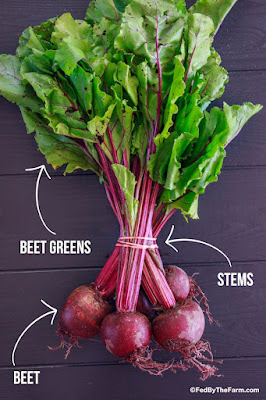Beets and Beet Greens
Selection
Buy 2 bunches for 4 servings. Beets are sold in bunches with tops on; tops should be fresh and green. Beets should be smooth, clean and firm.
Preparation
Cut off all but about 2 inches of the tops*. Save the tops. Wash beets well.
Cooking
Cook whole beets, covered in boiling, salted water to cover until tender - 30 to 45 minutes. Very old, woody beets will never cook tender.
Serving
Drain. Pour cold water over beets and rub off skins. Serve small beets whole; slice or dice large ones. Reheat with butter or margarine, salt, pepper and a little fresh lemon juice or vinegar.
To serve Raw Beets
Shred fine and add to a salad.
*Cooking Beet Tops (Greens)
Rinse the greens well. Cook, covered, using only the water that clings to the leaves after washing. Boil for about 3 minutes until tender. Serve at once seasoned with salt, pepper, and butter. You could also use a little vinegar or fresh lemon juice.

Comments
Post a Comment